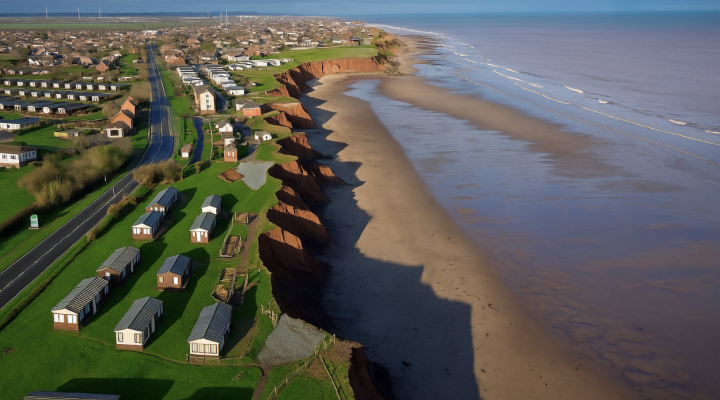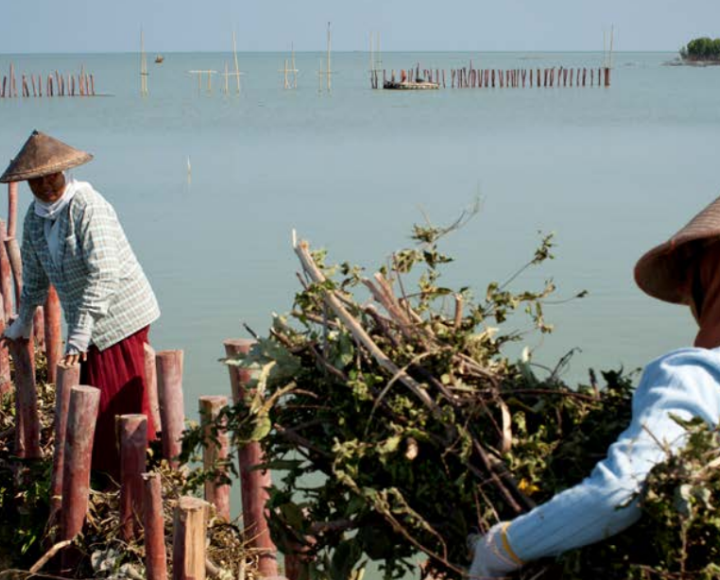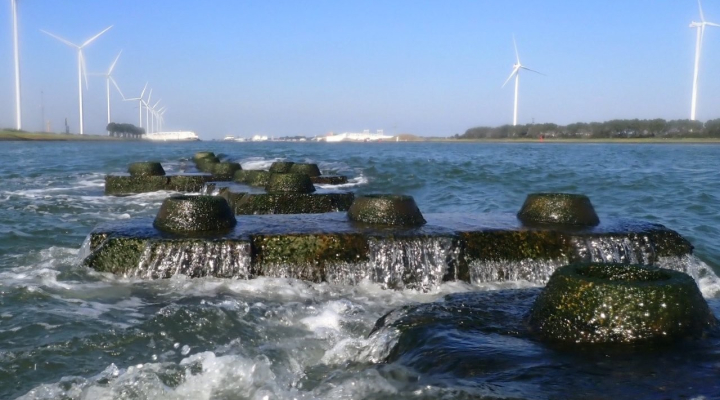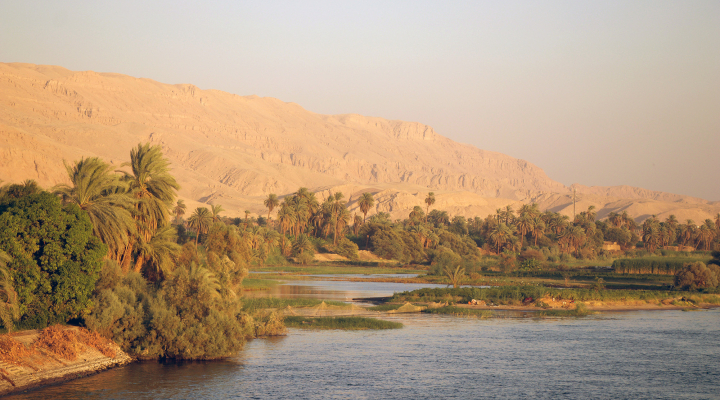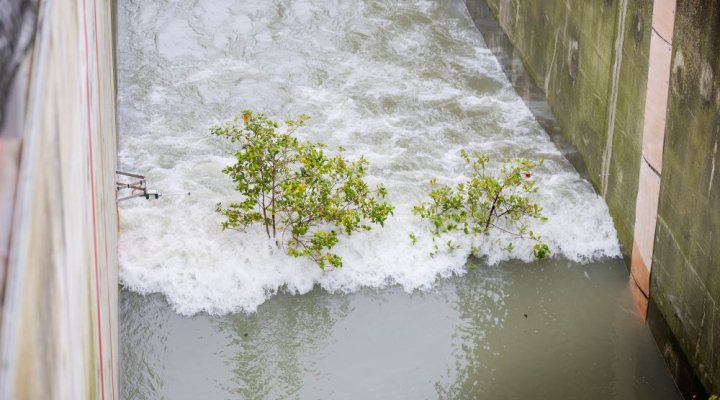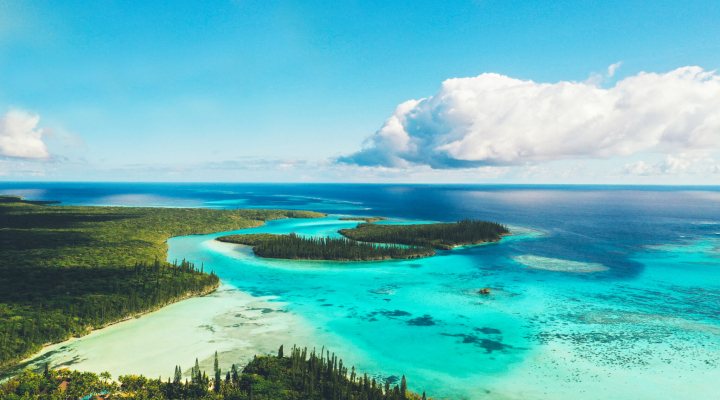Oyster breakwater reefs and coastal protection
By placing artificial substrates along the beach, oysters can grow and form a reef that stops coastal erosion. Such an oyster reef enhances the biodiversity and helps local communities to make their fishery more sustainable.
This is the outcome of a PhD-study by Mohammed Shah Nawaz Chowdhury of Wageningen Marine Research who analysed the impact of these reefs on Bangladesh’s coastal defences.
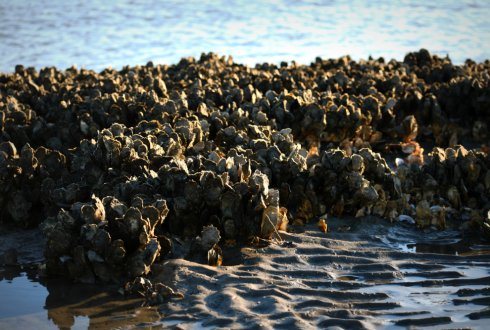

Self-sustaining oyster population
Chowdhury concluded that, given a certain coastal environment, an oyster reef can develop on artifice substrates. The oyster populations can develop self-sustainingly, contributing to overall coastal protection.He specifically studied the placement of large concrete rings off the coast of the Bengal island of Kutubdia to protect the coastline. These rings have been colonised by oyster populations of the species Saccostrea cucullata.
The development of this population on the concrete rings led to a self-sustaining oyster reef and proved to function effectively as breakwaters: the force of waves between 0.5 and 1 metre high is reduced, while waves lower than 0.5 metre are completely blocked.
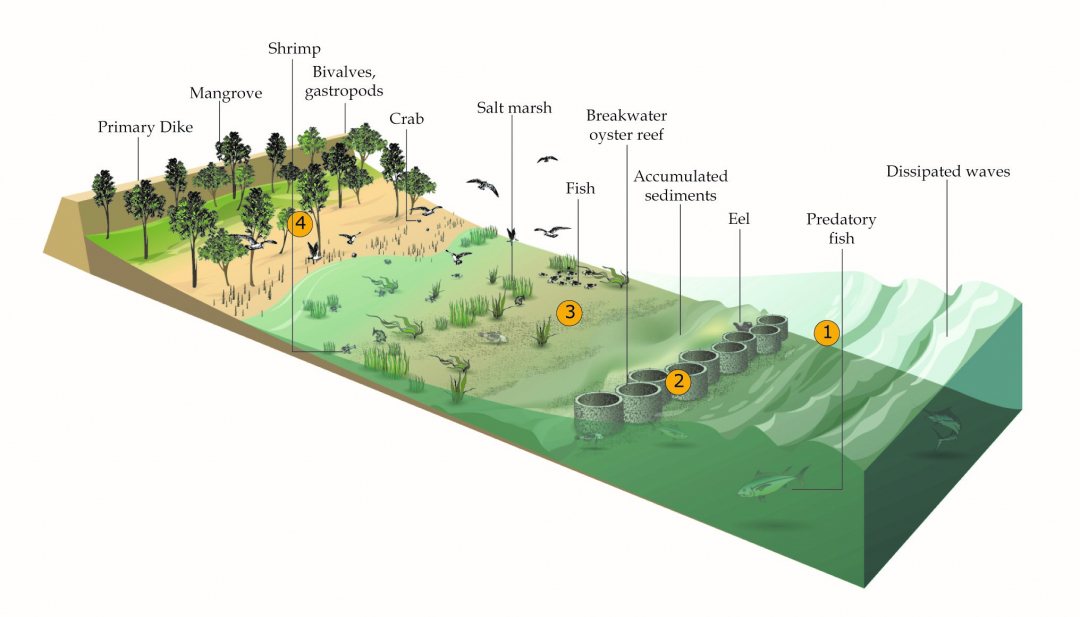
Coastal resilience
Moreover, Chowdhury discovered that the reefs affected the surrounding tidal flat morphology by altering sediment and flow dynamics. Intertidal communities (macroinvertebrates, fish, and salt marshes) benefit from these changes.
In his PhD-thesis Chowdhury concludes that coastal resilience can be enhanced in an eroding coast by applying breakwater oyster reefs. The reefs not only protect the tidal flats against erosion, but also create other habitats like salt marshes, and enhance a large variety of ecologically and economically important species. This can offer additional livelihood for local communities.
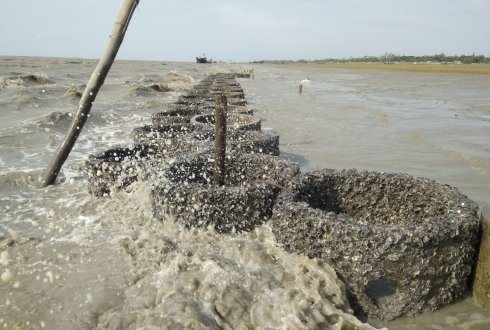

Local fishery
Oyster reefs also bring other ecological and economic advantages. They attract shellfish, fish and crabs, among other species. The reefs form a habitat for these species, where they can feed, find shelter and reproduce. Larger predators, such as catfish and rays, are in turn attracted to these smaller creatures. The oyster reefs not only greatly benefit from biodiversity, they also provide sustainable fisheries for the local population.
Chowdhury deliberately focused on the subtropical coastline of his homeland: 'I believe Bangladesh is more vulnerable to climate change than any other country. Tens of thousands of people are already fleeing because their land has been lost, and this could become millions, as sea levels rise even higher. It’s great that our research is helping to find solutions based on natural processes to protect coastlines like that of Bangladesh.’
Download the PhD thesis titled ‘Ecological engineering with oysters for coastal resilience’ by Mohammed Shah Nawaz Chowdhury on the website of the Wageningen University.




